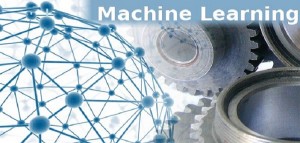
- What is machine learning?
- Key phases of machine learning
- Prediction API model of machine learning
What is Machine Learning?
Simply speaking, Machine Learning is a set of artifical intelligence techniques which are used to solve one of the following problems based on the examples in hand:
- Classification problems: Problems having “which type” as a question. For example, “which type” of email is this? (Spam or ham). In classification problem, one out of fixed number of answers are chosen.
- Regression problems: Problems having “how much” as a question. For example, “how much” should be the price of a house in a given locality? Simply speaking, regression problems are related with numeric answer.
Machine learning is a key aspect of data science. It allows data scientist to apply existing data sets to one of the machine learning algorithm and predict based on that. In other words, a person wanting to become a data scientist must learn machine learning algorithms to be able to predict/recommend.
Key Phases of Machine Learning
Following are key steps in machine learning:
- Training: Train the model
- Prediction: Predict using the model, given an input data-set
Prediction API Model of Machine Learning
Above steps of machine learning could be represented using following, from API perspective. Thus, whether using R, or pyhton APIs, following is how the API structure would look like:
# Model created based on a given data set
model = createModelAPI(existingDataSet)
# Model is fed with new dataset, newDataSet which gives predicted output, predictedOutput
predictedOutput = createPredictionAPI( model, newDataSet )
Lets take an example of linear regression using R programming console. Look at the code below:
# Linear regression model
model = lm( price ~ carat, data=diamonds )
price = predict( model, newData )
# Multiple linear regression model
model = lm( price ~ carat + cut + color, data=diamonds )
price = predict( model, newData )
- Mathematics Topics for Machine Learning Beginners - July 6, 2025
- Questions to Ask When Thinking Like a Product Leader - July 3, 2025
- Three Approaches to Creating AI Agents: Code Examples - June 27, 2025
I found it very helpful. However the differences are not too understandable for me